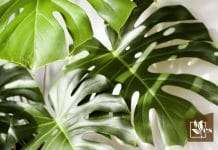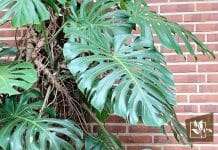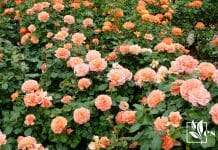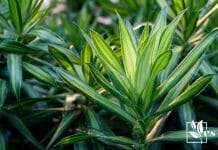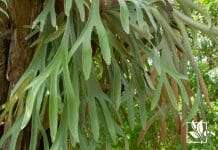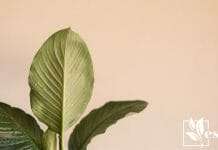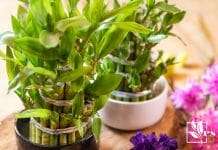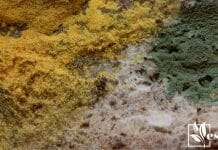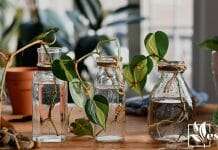Dipladenia plants boast vibrant flowers and lush greenery, but when their leaves start turning yellow and falling off, it’s a cause for concern among gardeners and plant enthusiasts like myself. Yellowing leaves can detract from the plant’s beauty and signal that something in its care routine may need adjustment. My experience with Dipladenia plants has taught me to look closely at the symptoms that precede the yellowing in order to diagnose the potential causes accurately, which can range from watering issues to pest infestations.

Understanding the different triggers for leaf discoloration is essential in reversing the condition and restoring the plant’s health. I’ve observed that inconsistent watering habits—both overwatering and underwatering—can lead to stressed Dipladenia plants with unhealthy, yellow leaves. Additionally, environmental stress, such as excessive direct sunlight or improper temperatures, can contribute to the problem. I also consider the possibility of nutrient deficiencies or disease when I see the leaves on my Dipladenia starting to change color.
To effectively tackle the yellowing and falling leaves of Dipladenia, it’s crucial to identify the underlying cause, which could be related to watering practices, light exposure, nutritional balance, or pest and disease issues.
JUMP TO TOPIC
Optimal Growing Conditions for Dipladenia
Dipladenia, known to some as Mandevilla, thrives when provided with well-draining soil, balanced water supply, and ample sunlight. Adjusting these factors is key to avoiding yellowing and falling leaves.
Soil and Fertilization
From my experience, I’ve found that Dipladenia plants prefer a potting mix that is rich in organic matter and ensures good drainage.
💥 Ideal Soil Composition
For soil, I recommend a mix that contains peat, pine bark, and perlite. This combination helps keep the soil well-aerated and prevents waterlogging. A balanced fertilizer, commonly termed as one with equal parts of nitrogen, phosphorus, and potassium, can greatly benefit Dipladenia’s growth.
Applying a slow-release fertilizer every few months can keep your plant strong and healthy. As Dipladenias prefer slightly acidic to neutral pH levels, I make sure to monitor the pH regularly, maintaining it between 5.5 to 6.5.
Watering and Drainage
💥 Proper Watering Practices
My Dipladenias do best with regular watering that allows the top layer of soil to dry out slightly between sessions. Ensuring that containers have adequate drainage holes is crucial to avoid root rot. Overwatering can easily lead to yellowing leaves, but it must also be coupled with sufficient drainage to avoid waterlogging.
If the plant is indoors, I make it a point to check the soil more frequently, as environmental conditions differ from the outdoors. I’ve observed the best results when I water my Dipladenia deeply but infrequently.
Sunlight and Location
For the Dipladenia plant to avoid yellow leaves, ensuring it receives the right amount of sunlight is critical.
| Sunlight Requirements | |
|---|---|
| Indoor Lighting: | Place near a window or under grow lights to provide enough direct sunlight. |
| Outdoor Positioning: | Partial shade or full sun that includes protection from intense midday sun. |
It needs at least 6 hours of sunlight per day, preferably in the morning when the light is gentler. I avoid direct midday sun, which can scorch the leaves, causing them to turn yellow and eventually brown. However, insufficient light will also result in poor flowering and leggy growth. If indoors, a spot near a bright window or under grow lights will work well. My outdoor plants thrive in a location that receives partial shade, particularly during the hottest part of the day.
Identifying and Treating Common Issues
In my experience of gardening, I’ve noticed that the key to maintaining a healthy dipladenia involves understanding how to tackle its yellow leaves and the tendency for these leaves to drop off. I’ll walk through some specific pests and diseases to look out for as well as the nutrient-related issues that can lead to compromised leaf health.
Pests and Diseases
Pests like spider mites, aphids, mealybugs, and scale can be quite troublesome. These tiny culprits sap the vitality of a plant by feeding on its sap, leading to yellowing leaves, which is often the first sign of a pest infestation. A powerful yet gentle remedy I use involves a mix of soapy water or insecticidal soap sprays, which can effectively combat these pests. In more severe cases, applying neem oil has proven successful due to its natural insecticidal properties.
Always test a small area of the plant with neem oil first to ensure it doesn’t react negatively.
As for diseases, fungal diseases such as leaf spot and powdery mildew can manifest as spots or a white powdery substance on the foliage. Once infected, leaves can turn yellow, brown, and might wilt. I have found that applying a suitable fungicide is vital in treating such conditions, helping prevent further spread and ensuring the recovery of the plant.
Nutrient Issues and Leaf Health
Nutrient deficiencies can also cause yellowing leaves in dipladenia plants. A sign of this is when the yellowing occurs in new growth or when yellow leaves appear with green veins. To rectify this, I ensure proper fertilization with a balanced, water-soluble fertilizer during the growing season, which typically provides the necessary nutrients.
| Nutrient | Deficiency Symptom | Action |
|---|---|---|
| Nitrogen | Old leaves turn yellow | Apply high-nitrogen fertilizer |
| Iron | Young leaves show yellowing with green veins | Supply chelated iron supplement |
| Potassium | Yellow leaves with brown spots | Adopt a potassium-rich feeding regimen |
I make sure to follow a regular watering schedule, as both overwatering and underwatering can contribute to yellowing leaves. The sign of overwatering is when the leaves turn yellow uniformly, while underwatering typically causes the tips to turn yellow first. Both situations can lead to wilting, and my solution involves adjusting watering frequency and ensuring proper drainage.
Proper Care and Maintenance
To maintain a healthy Dipladenia, key elements include appropriate pruning, timely repotting, and providing year-round attention. Correct practices ensure the prevention of yellowing leaves and support continuous growth.
Pruning and Repotting
Pruning is crucial for Dipladenia to encourage new growth and remove any dead or yellowing leaves. I always prune in the early spring before the growth season kicks in. This approach prevents unnecessary stress on the plant and maximizes its potential for lush foliage and blooms during summer. Here’s how I do it:
- Cut back vines that have outgrown the desired shape.
- Remove any damaged or diseased foliage.
- Use sharp scissors or pruners for clean cuts.
Repotting should take place every few years or when the roots outgrow their current container. I ensure to repot the Dipladenia into a container with sufficient drainage to promote a well-drained soil, crucial for its tropical nature. Repotting is ideally done in spring.
Year-Round Care
Dipladenia care throughout the year includes monitoring watering practices to avoid both dehydration and overwatering. As a tropical plant, Dipladenia enjoys consistent moisture but despises soggy feet. Here’s what’s worked for me:
| Season | Watering Needs |
|---|---|
| Spring/Summer | Increase watering to keep the soil consistently moist. |
| Fall/Winter | Reduce watering but prevent the soil from completely drying out. |
Moreover, Dipladenia benefits from being an evergreen perennial in warmer climates or a cherished annual houseplant in cooler zones. Keeping it in a container allows me to adjust its location based on the weather, ensuring it receives the right amount of light and warmth year-round.
Frequently Asked Questions
If your Dipladenia leaves are turning yellow and falling off, it’s often due to improper watering or nutrition, but can also be caused by pests, disease, or inadequate growing conditions.
I get a lot of questions about Dipladenia, a gorgeous plant known for its trumpet-shaped flowers and lush, dark green leaves. Let’s tackle some of the most common concerns.
💥 Watering: How much does Dipladenia need?
Dipladenia, also known as Mandevilla, prefers consistent moisture but dislikes oversaturation. I generally ensure the top inch of soil is dry before watering again. Also, when I bring them indoors, I reduce the frequency to account for less evaporation.
💥 Sunlight Requirements: Can Dipladenia grow in indirect light?
Native to South America, Dipladenia thrives in bright, indirect sunlight. If they receive too much direct sunlight, the leaves can burn, but too little light can weaken the plant, causing yellow leaves.
💥 Is Dipladenia toxic?
Although Dipladenia is not known to be fatally toxic, it can cause mild indigestion or discomfort if ingested by pets or humans. I always advise keeping it out of reach from curious pets and children.
Nutrition: Does Dipladenia need special fertilizer?
Yes, like any flowering plant, Dipladenia benefits from a balanced fertilizer during the growing season. I recommend using a high-phosphorus formula to promote vibrant blooms.
Pests and Diseases: What should I look out for?
Pests like spider mites or aphids may leave a sticky honeydew on the leaves, and fungal diseases can also be culprits for yellowing leaves. I inspect regularly and treat with appropriate organic or chemical remedies.
Propagation: Can I grow more Dipladenia from cuttings?
I’ve had great success propagating Dipladenia through stem cuttings. I ensure to use a rooting hormone and maintain high humidity for the best results.
Remember, each Dipladenia has its own personality, so what works for one may not work for another. It’s all about observing and adjusting to meet their needs.


